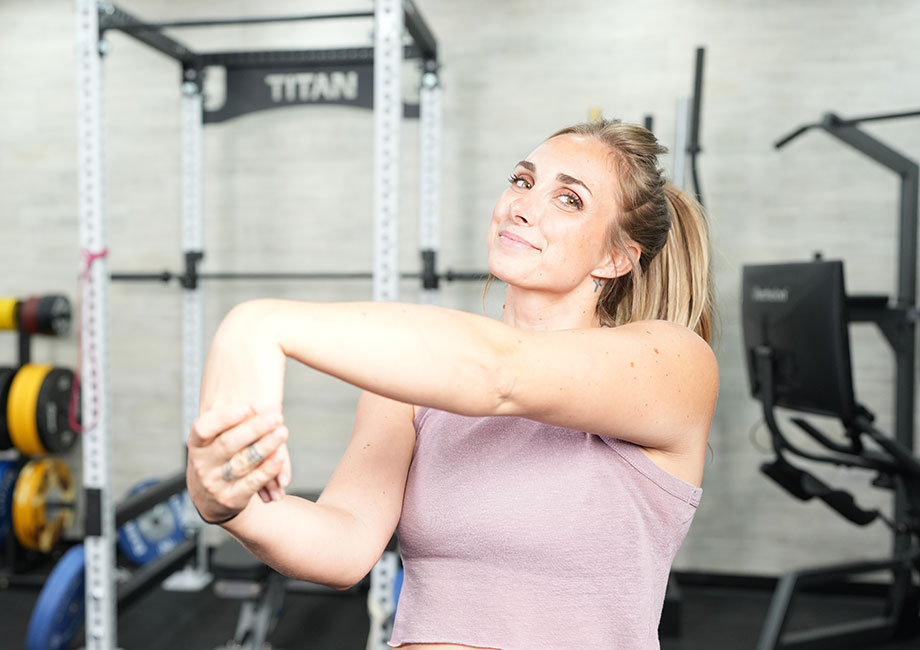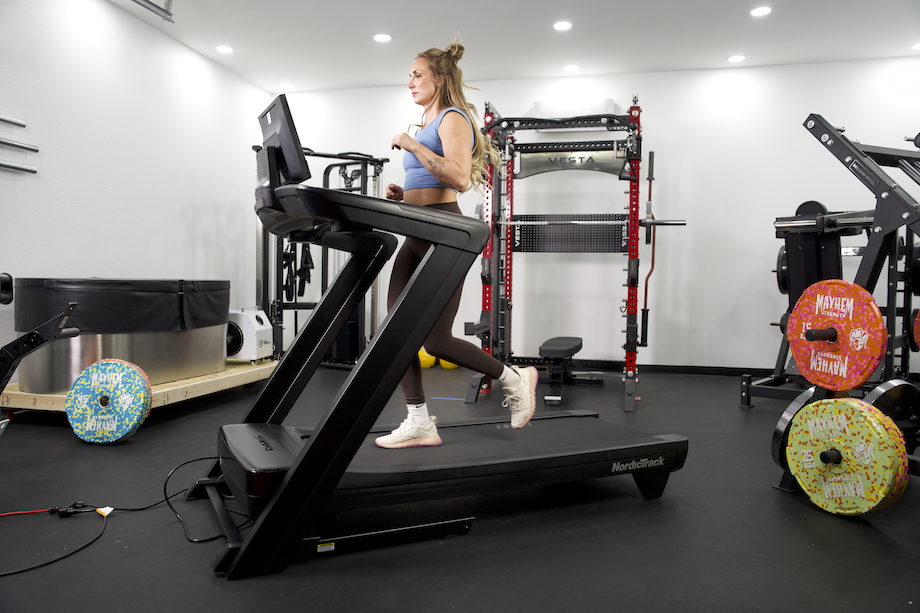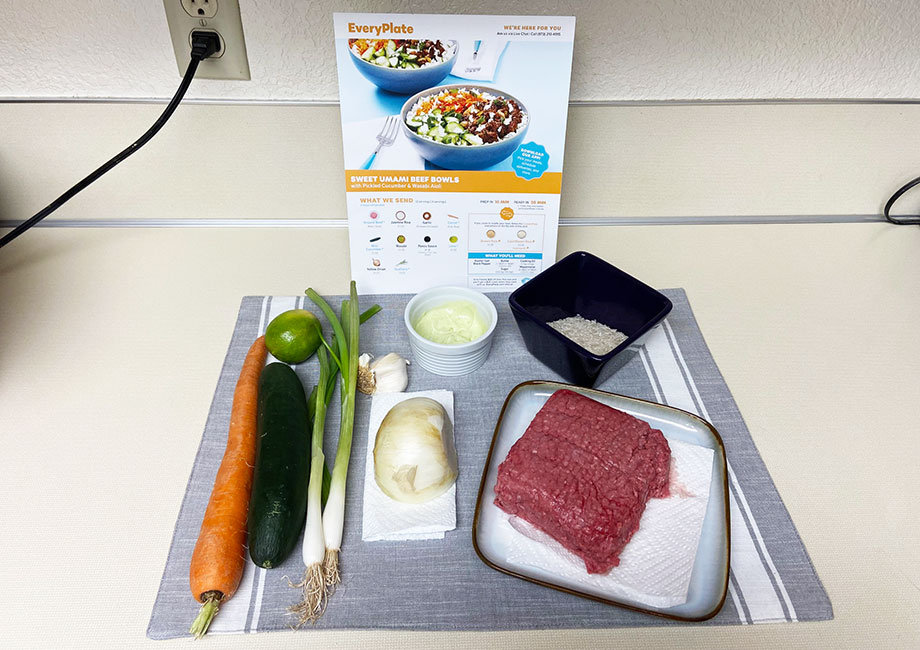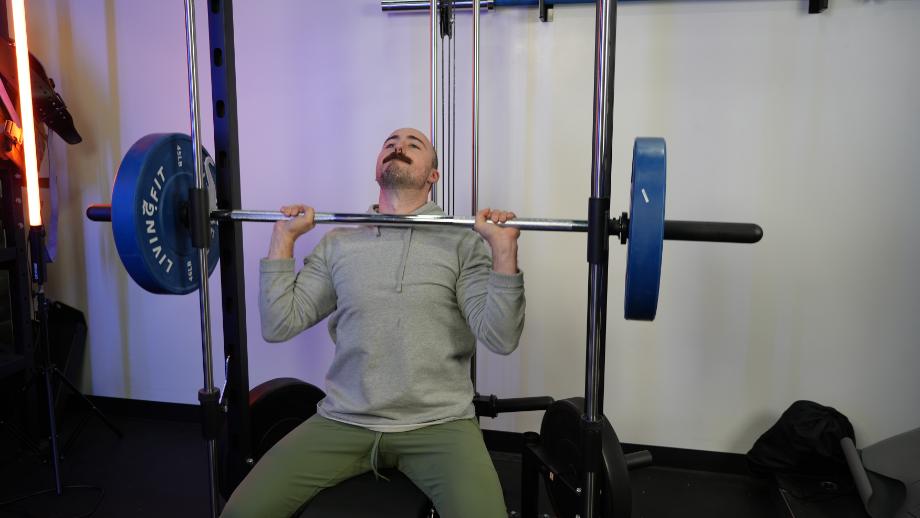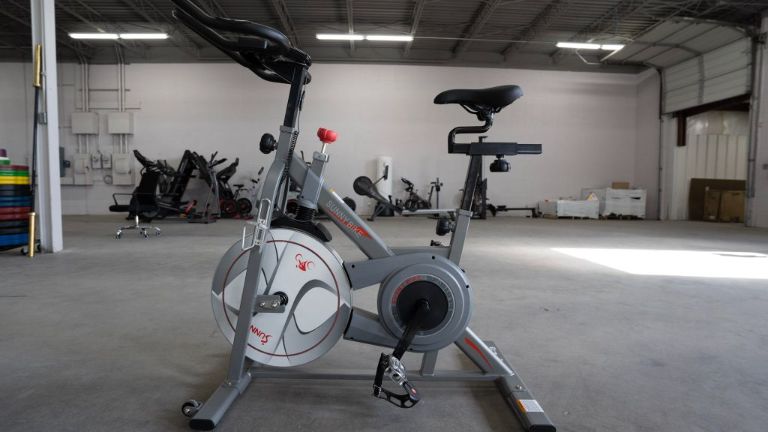It’s easy to overlook just how much we use our wrists every day. Our wrists let us do so much, from gripping a steering wheel to opening that super hard-to-open pickle jar to holding a phone so we can scroll social media for literal hours at a time. No judgment; just saying!
The wrist joint is also incredibly important during heavy weightlifting exercises and calisthenics. Warm-ups, stretching, and wrist mobility exercises all work to keep your wrists safe and reduce your risk of injury as your workouts become more intense or involve heavier weights.
Kate Meier, NASM-CPT, USAW-L1, CF-L1, and GGR Head of Content, shares some of the best wrist mobility exercises to help keep your wrists healthy and injury-free. Check them out below!
When to Perform Wrist Mobility Exercises
“Wrist mobility is important for everyone,” says Kate Meier, CPT, USAW-L1, CF-L1. “Athletes benefit from having wrist strength, stability, and mobility, but healthy wrists help everyone complete a variety of tasks every day. Everyone can benefit from wrist mobility exercises.”
RELATED: Best Wrist Wraps
So, when should you do your wrist mobility exercises? Is it best to lump them in with a warm up, in between weightlifting sets, or after the session when you’re stretching and cooling down?
There’s never a bad time to do wrist mobility exercises. You can do them exclusively at the gym before, during, and/or after the workout. You can do them at home when you’re winding down for the evening. You can do them first thing when you wake up in the morning.
The choice is yours.
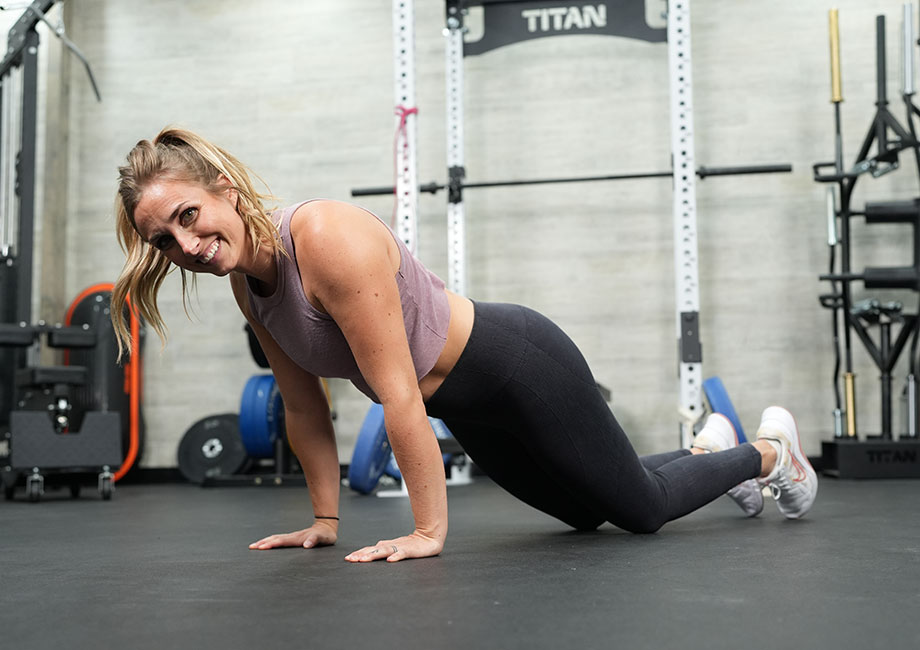
“Wrist mobility exercises work well in between sets to help break down the buildup of lactic acid,” says Kate. “They’re also great after exercise during a cooldown. You could do wrist mobility exercises during the warm-up, but I advise you to make sure it’s coupled with an active warm-up so you can really get your heart rate up and blood flowing.”
The exception here, of course, is if you have recently suffered a wrist injury and you’re performing mobility exercises for physical therapy and rehabilitation. If that’s the case, it’s best to discuss with a physical therapist so they can prescribe which specific wrist exercises work best for your condition, when to do them, and how often they should be done as well.
Prayer Wrist Stretch
Why do it: The prayer stretch is simple but effective for enhancing your wrist’s range of motion while simultaneously loosening your forearm muscles.
How to do it:
- Place your palms together in front of your chest, similar to the prayer position.
- Slowly lower your hands, keeping your palms touching, until you feel a stretch in your wrist and forearms.
- Hold for the desired duration, then release.
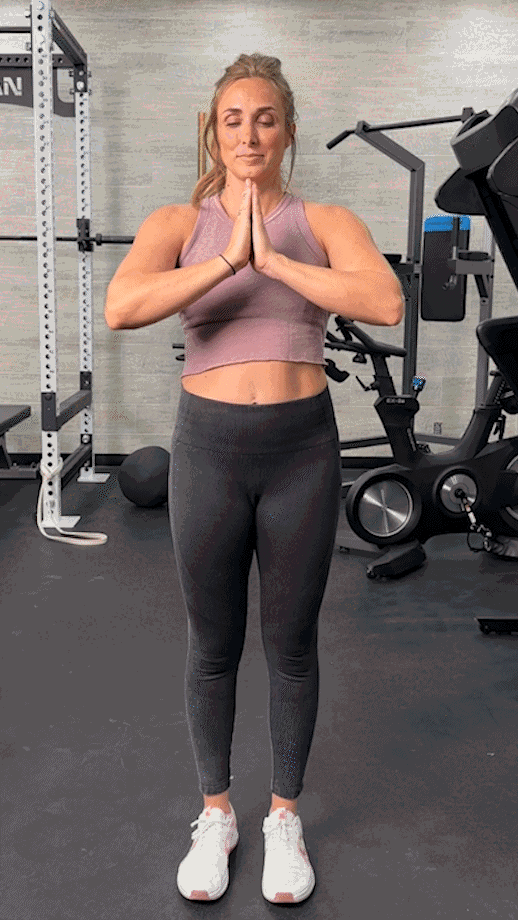
Wrist Flexor Stretch
Why do it: “The wrist flexor stretch isn’t only for wrist mobility,” says Kate Meier, CPT, USAW-L1, CF-L1. “It also improves the flexibility of your elbow joint and fingers, too.”
How to do it:
- Hold your arm out in front of you with your palms facing the ceiling and your elbow slightly bent.
- Grab your fingers with your opposite hand and gently pull them back towards your body until you feel a stretch in your wrist and forearm.
- Hold for the desired duration, then release, switch sides, and repeat.
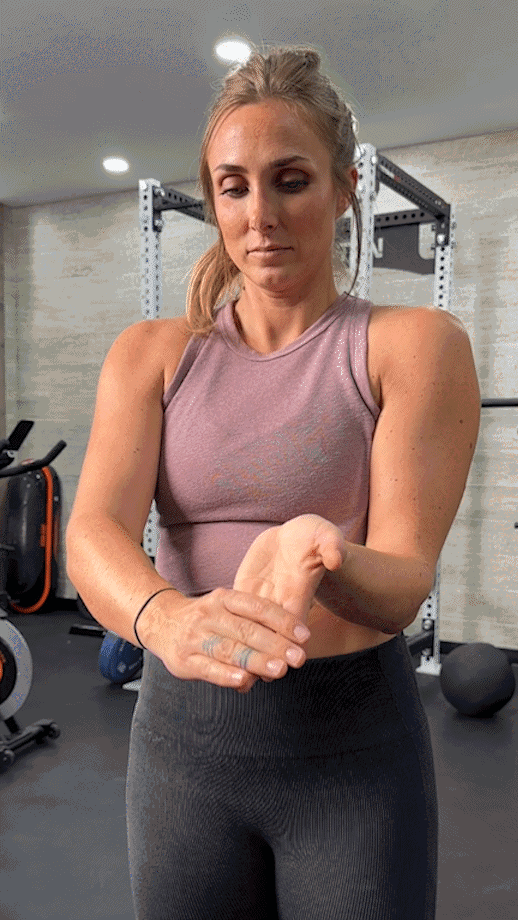
Wrist Extensor Stretch
Why do it: According to a randomized trial in the European Journal of Applied Psychology1, stretches like the wrist extensor stretch helps improve EMG activation of the forearm muscles, wrist extensors, and flexors during gripping. So, in addition to improving wrist mobility, this stretch may also enhance our grip strength.
How to do it:
- Hold your right arm out in front of you with the back of your hand facing the ceiling.
- Place your left hand on top of your right hand and gently pull your wrist downward until you feel a stretch.
- Hold for the desired duration, then release, switch sides, and repeat.
RELATED: Grip Strength Exercises
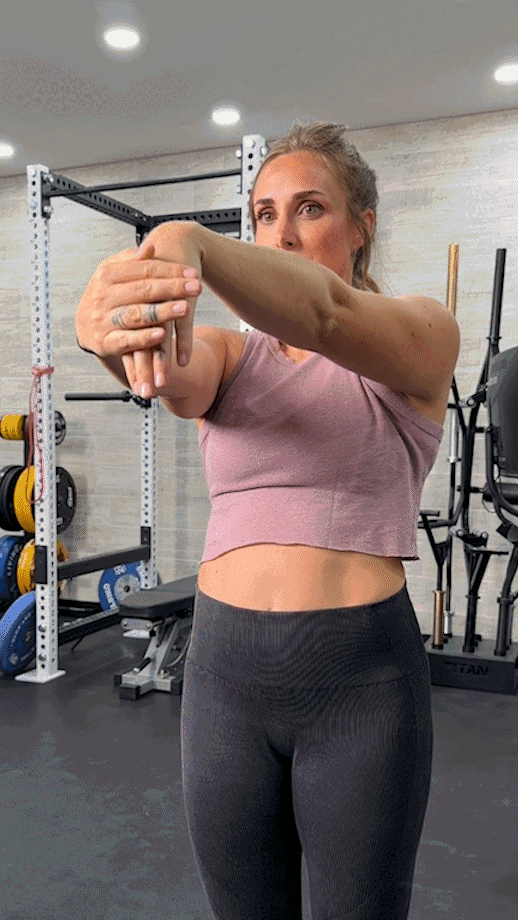
Wrist Rotations
Why do it: “Wrist rotations encourage a wide range of motion in the wrist joint,” says Kate. “They’re especially important if you’re about to do an exercise or lift that takes your wrist out of neutral positioning, like push-ups, handstands, and front squats, for example.”
How to do it:
- Hold both arms out straight in front of the body.
- Clench your fists, then begin circling your wrists from pronation to supination.
- Move them clockwise for a short duration, then reverse the movement.
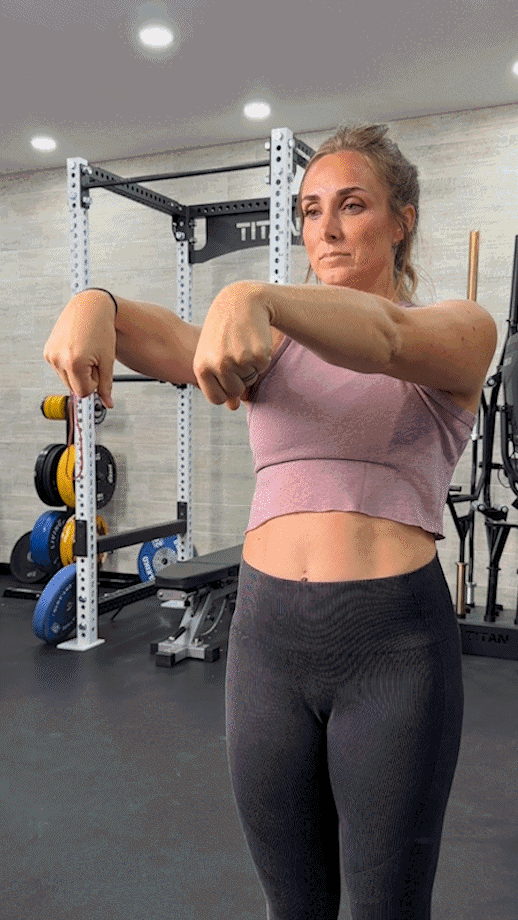
Wrist Waves
Why do it: It might look like you’re busting out your favorite dance move, but this mobility exercise encourages a healthy range of motion in your wrist, forearms, and elbows.
How to do it:
- Hold your arms horizontally in front of the body, interlocking your fingers.
- Raise your right elbow, then “send the wave” from your elbow to your right wrist, to your right fingers, left fingers, left wrist, and left elbow.
- Repeat for the desired number of reps, then repeat the set starting with the left elbow.
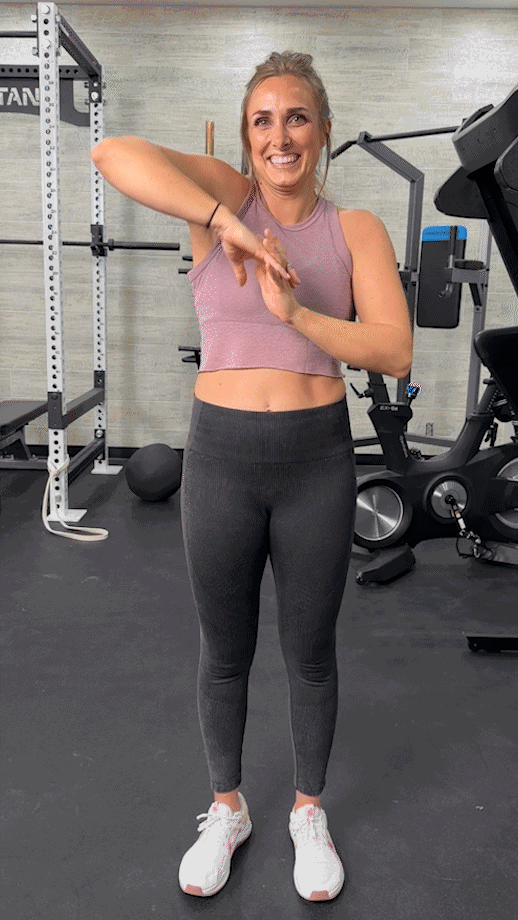
Quadruped Wrist Flexion and Extension
Why do it: “Using a wall or the floor to extend your range of motion improves wrist mobility, making it a great pick for loosening up before, during, or after exercise,” says Kate.
How to do it:
- Get on all fours and place your palms on the floor with your fingers facing your knees.
- Slowly shift your body forward until you feel a good stretch in your wrists and forearms.
- Hold for the desired duration, then release.
- Now place the top of your wrists on the floor and slowly shift forward again.
- Stop once you feel a good stretch in the tops of your wrists and forearms, then release.
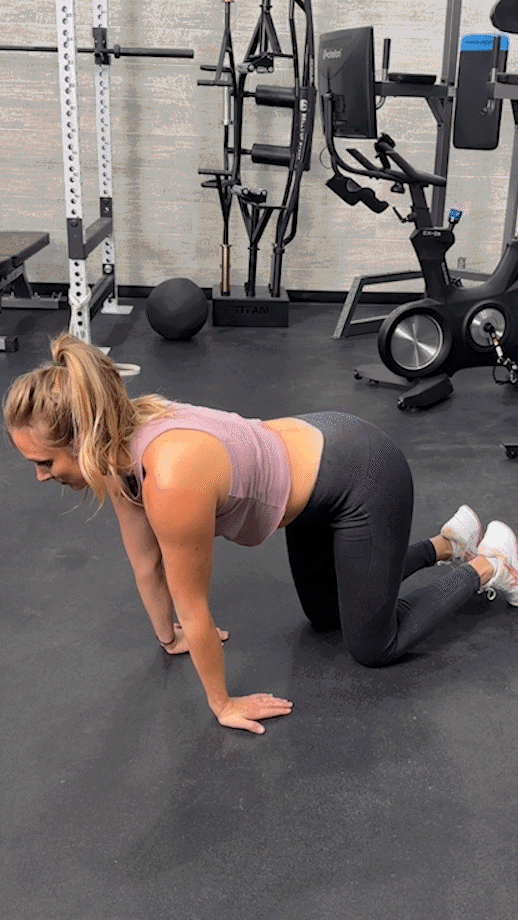
Quadruped Rocking Wrist Stretch
Why do it: Quadruped rock backs improve wrist mobility and, according to Physical Therapy Research2, contribute to improvements in motor function in the lumbar region and hip joints, helping alleviate chronic low back pain to some degree, too.
How to do it:
- Get in the quadruped position (all fours) with your palms on the floor, fingers facing away, shoulder blades pinched, and core braced. This is the starting position.
- Slowly rock back and forth, then side to side.
- Continue for the desired duration, then rest.
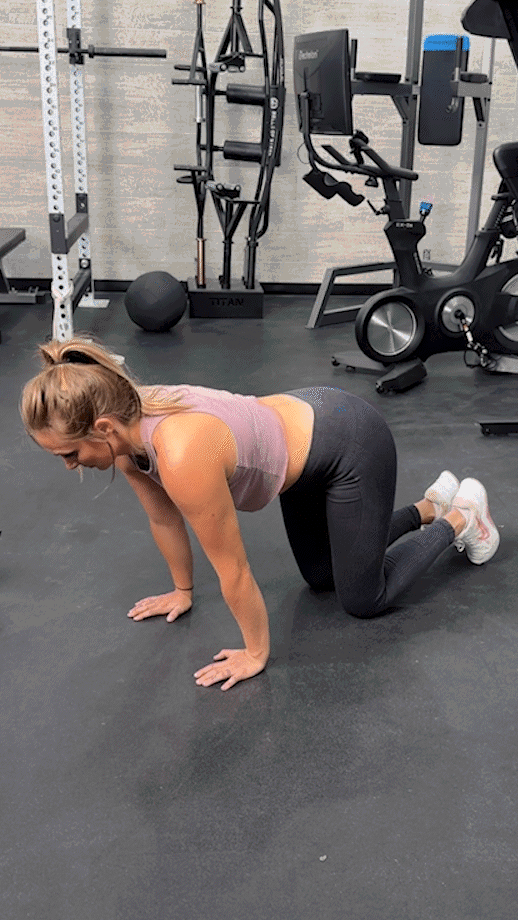
Wrist Mobility Exercises Final Thoughts
We fitness-minded folk tend to have the wherewithal to work out our major muscle groups. It’s second nature to grab a set of the best dumbbells and get our pump on.
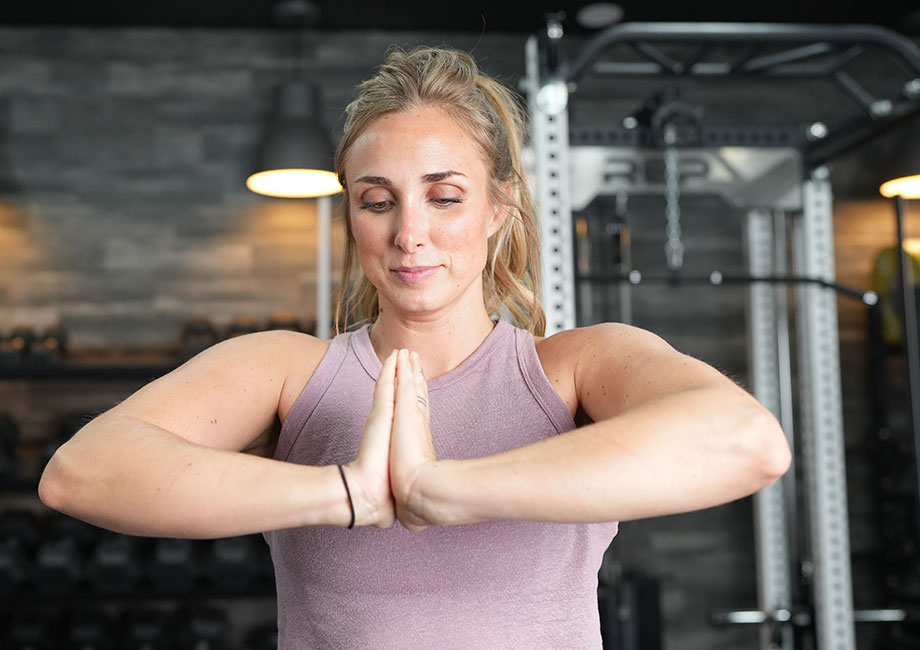
Wrist mobility exercises are equally (and arguably more) important because:
- They allow us to exercise at a higher intensity
- They allow us to lift heavier weights
- They protect us from injury
- They alleviate minor wrist pain after exercise
So, if you’re training hard and want to realize your personal fitness goals—or are a keyboard jockey craving wrist support and relief—wrist mobility exercises should only help improve your chances of staying healthy and injury-free as you keep at it!
Wrist Mobility Exercises: FAQ
How do you fix poor wrist mobility?
Poor wrist mobility could be the result of various conditions, including sedentary lifestyles, wrist injuries, and medical conditions.
If you have poor wrist mobility as a result of an injury or medical condition, we recommend you consult your doctor for medical advice, as you will need a qualified healthcare professional to diagnose and prescribe specific treatment.
For regular run-of-the-mill wrist stiffness, however, stretches, wrist mobility exercises, and foam rolling may help improve mobility and increase your wrist’s range of motion.
RELATED: Best Muscle Recovery Tools
According to the Journal of Strength and Conditioning Research3, resistance training and wrist-strengthening exercises could contribute to improved wrist strength and motor control as well.
What causes poor wrist mobility?
Common wrist conditions and injuries include arthritis, broken wrist, carpal tunnel syndrome, ganglion cysts, sprains, strains, or tendonitis. If you suspect you are suffering from any of the above, we recommend consulting a doctor, DPT, and/or other qualified medical professional.
Poor wrist mobility may also be a result of a sedentary lifestyle. If that’s more likely the reason your wrist is stiff, try adding wrist mobility exercises into your regular routine to see if they help.
Do push-ups strengthen wrists?
“Absolutely,” says Kate Meier, CPT, USAW-L1, CF-L1, and GGR Head of Content. “Push-ups are already one of the best bodyweight exercises because they target muscles throughout the entire body, but, because the push-up position places you in a state of constant wrist extension, you’ll increase wrist strength too.”
RELATED: What Muscles Do Push-Ups Work?
References
1. Shimose R, Matsunaga A, Muro M. Effect of submaximal isometric wrist extension training on grip strength. Eur J Appl Physiol. 2011;111(3):557-565. doi:10.1007/s00421-010-1675-4
2. Nishimura T, Tanaka M, Morikoshi N, Yoshizawa T, Miyachi R. Effect of Interventions for Improving Lumbar Motor Control on Low Back Pain in Sedentary Office Workers: A Randomized Controlled Trials. Phys Ther Res. 2021;24(3):240-248. Published 2021 Sep 29. doi:10.1298/ptr.E10121
3. Chu E, Kim YS, Hill G, Kim YH, Kim CK, Shim JK. Wrist Resistance Training Improves Motor Control and Strength. J Strength Cond Res. 2018;32(4):962-969. doi:10.1519/JSC.0000000000002019


